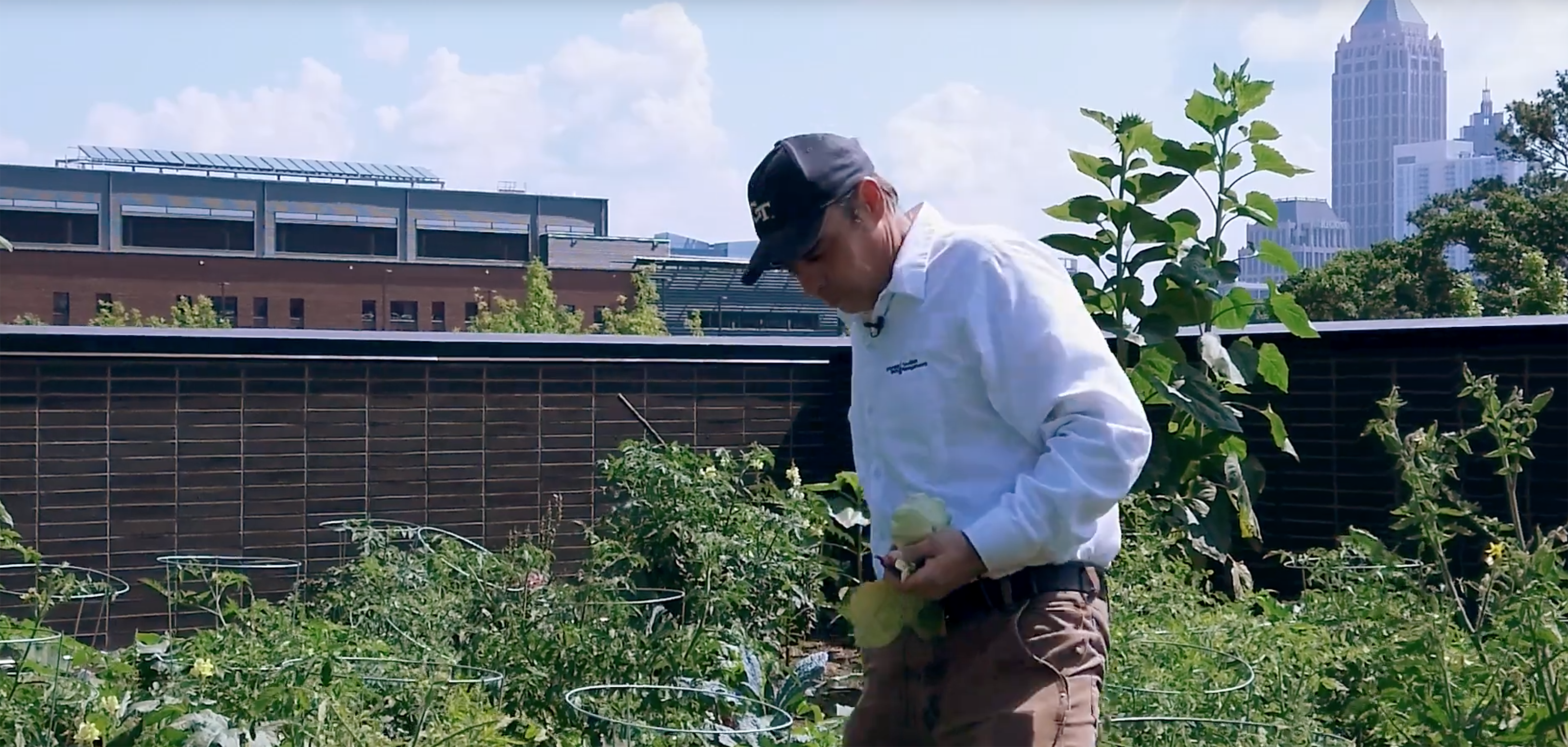

Georgia Tech's main campus, with 400 acres and more than 15,000 trees, has a team of landscape professionals maintaining its beauty year-round. Tech Lawn and Garden taps into the knowledge of the lawn and garden experts in Landscape Services, showing how they do what they do and sharing tips that you can use at home.
Landscaping Tips for Beginners
By Steve Place, project manager, Office of Campus Sustainability
Creating a beautifully landscaped yard can be time-consuming and expensive. Having a plan and avoiding mistakes are the keys to success.
When beginning to landscape, you must do a little homework. The most important factor is the location. Does the area get full sun, partial sun, or full shade? Also, be aware of drainage — does the plot drain quickly or does it stay damp for several days after a rain? After you know the level of sun exposure and drainage characteristics, you can select from a palette of plants best suited for that location. Follow the planting guidelines that come with flowers, shrubs, and trees purchased at nurseries or big box stores.
It’s extremely important to consider native plants because they are aligned with the natural growing conditions of the location, requiring less water, fertilizer, and pesticides. In fact, they can help prevent water runoff and improve air quality. Native plants also support the native wildlife, especially birds, by providing a natural living environment and sometimes berries and seeds as a food source. Remember, all things in nature are connected, so we should think about that when selecting plants.
Native plants do not require a lot of fertilizer. The natural cycle provides the plants with almost everything they need. However, if you choose to fertilize, be careful. Fertilize lightly and after the plants have bloomed. Avoid overfertilizing, because it can burn or even kill the plants.
If you’re incorporating outdoor flowerpots into your landscape, there are a few rules to follow. First, make sure the pots have drainage holes to allow water to flow through. Line the bottom of the pots with a thin layer of gravel or other material such as broken clay tiles that will allow for drainage. Use a potting soil that allows water to filter and drain instead of becoming compacted.
Lastly, there is the issue of managing pests, particularly in the South, where they are plentiful. Whether your plants have aphids or other pests, try to manage them in the least toxic way possible first. That could be by examining the plant’s leaves and picking pests off by hand, or just using a strong stream of water to wash them away. Avoid using strong chemical solutions. Also, avoid using mosquito sprays, because the chemicals are indiscriminate — they will kill mosquitos, but they also may kill bees and butterflies, which are important pollinators.
If you have questions about what native plants work well in your area or questions about your soil, contact your local county extension office.
 Steve Place tends The Kendeda Building rooftop garden.
Steve Place tends The Kendeda Building rooftop garden.

Credits
Video: Steven Gagliano
Editing: Stacy Braukman
